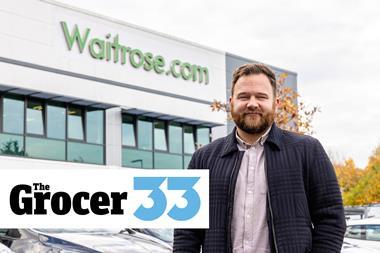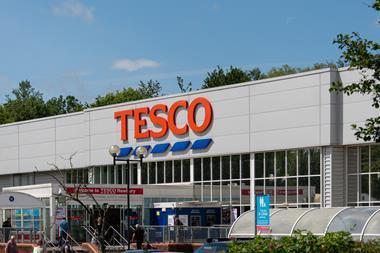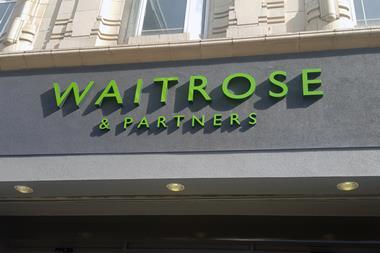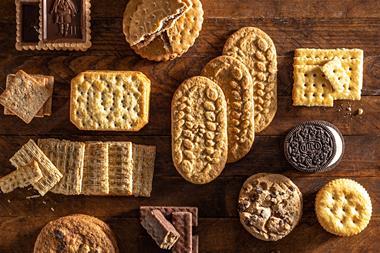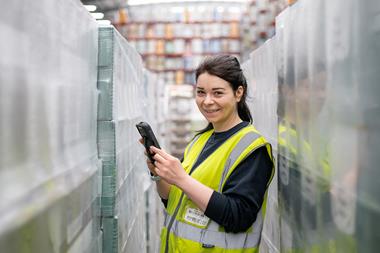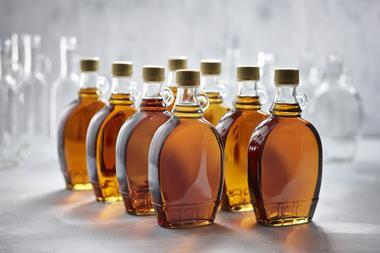How does a business grow from a post-WW1 market stall in Hackney selling NAAFI surplus into the retail giant that dominates the UK supermarket scene today? Here are a few of the standout moments in the story of Tesco so far, as it reaches the centenary of its birth
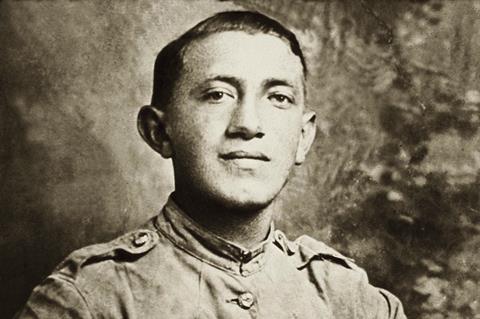
1919: Tesco is born
What do you do when the First World War ends, you have £30 demob money in your pocket, and you don’t want to follow your Polish immigrant father into the rag trade? If you are Jack Cohen, who had narrowly avoided drowning on a sinking ship during the war, you spend every penny on surplus army food stock from NAAFI, set up a market stall in Hackney and get to work. He started as he meant to go on.
At the end of that first day of trading back in 1919 Cohen had made £1 profit from sales of £4, a healthy return which propelled him forward. Working alongside his wife, seven days a week, from early in the morning to late at night, he quickly built up from one market stall. Thus he sowed the seeds of what would become Tesco, the global retail and wholesale giant that today has 6,720 stores around the world in eight different countries, employing 450,000 people, with sales of £57bn and profits of over £2bn.
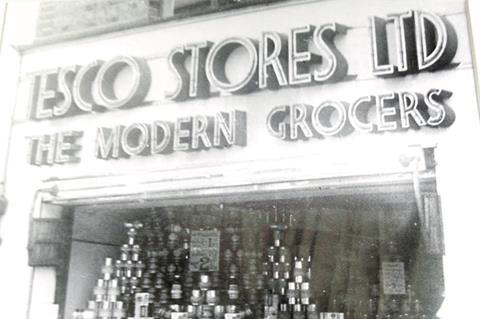
1929: First store
Every retail giant starts with a single store, and the very first Tesco opened in Burnt Oak, Edgware, in North London – about 10 miles away from Cohen’s first market stall in Hackney. The store resulted from frustration with the lackadaisical attitude and unreliability of his market stall suppliers. Cohen wanted to increase stability of supply for the business and his customers. The first store sold dry goods, including Tesco tea, and it quickly became renowned for its keen price points, with Cohen using it as a platform for expansion in the capital.
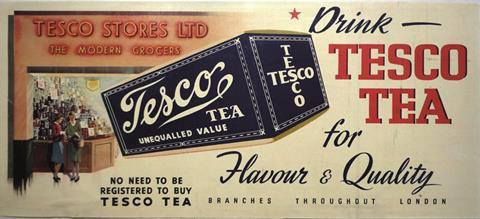
1924: First own-label product
Five years on, what else would kickstart the burgeoning business that would become Britain’s biggest but a nice cup of tea? Cohen was supplied with the tea by T E Stockwell, and in an early example of cross collaboration with a supplier, he took the TES and added the first two letters of his surname, CO, to produce Tesco’s first own-label product. It quickly became synonymous with his stalls, though it wasn’t until later that Cohen christened the actual business Tesco.
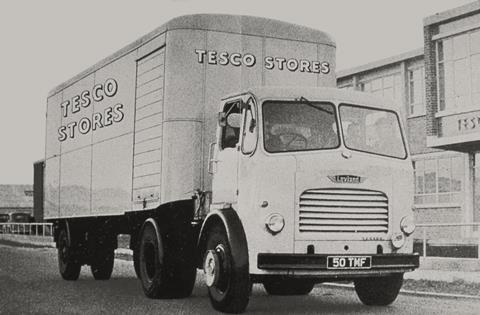
1934: First warehouse
Five years on and now with several shops, Cohen purchased some land at Angel Road, Edmonton, in the middle of his north London stronghold, to build a shiny new HQ and a warehouse. It utilised modern techniques for stock control, had a fleet of 10 Tesco-branded trucks and employed 24 people.
1939: Expansion
Cohen had more than 100 stores by 1939, including the first stores outside London. When war broke out Cohen immediately introduced his own form of rationing using a points-based system, so everyone, rich or poor, was treated equally at Tesco. He also joined the Food Trade Emergency Committee.
1947: Flotation
Tesco launched onto the stock market with shares priced at 25p and the City was more than keen. More than 80,000 traders wanted in, with the IPO oversubscribed by 174 times. They were right to do so – Tesco shares soared in price and the business became a darling of the City and a regular in the FTSE 100.
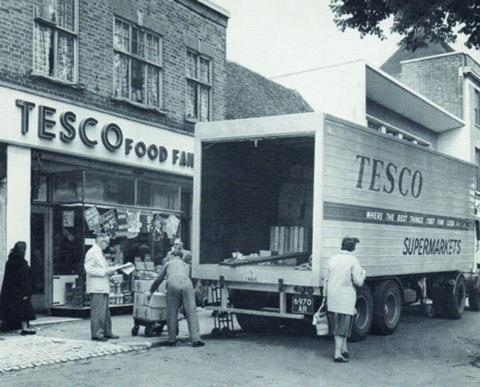
1948: Self service
Cohen first took a trip to sunny America in 1932 to investigate the trend for self-service supermarkets. He left unimpressed and believed British shoppers would feel the same. But after the war, encouraged by his son-in-law Hyman Kreitman, who had joined the business and would later take the reins at Tesco when Cohen retired, he decided to trial the concept at a store in St Albans. At first customers were bemused, and Cohen actually closed the store down for a while, as shoppers did not initially appear receptive to his attempts to reproduce the “gleaming palaces” he had found in the US. However, he reopened the store a year later and this time his customers were ready.
1955: Acquisition
Kickstarting a succession of acquisitions that would become a familiar pattern and route to growth, Tesco snapped up 19 Burnards stores, a self-service rival. Cohen would go on to buy 500 more stores over the next five years, including 70 Williamsons, 200 Harrow Stores and 97 Charles Phillips & Company stores.
1958: First supermarket
Cohen decided Maldon, in Essex, would be the perfect site for Tesco’s first supermarket, featuring fresh food and counters selling cheese, butter and meats. The 1,750 sq ft store was operated under the Burnards brand, though canopies about the produce counters bore early versions of Tesco’s red and white stripes.
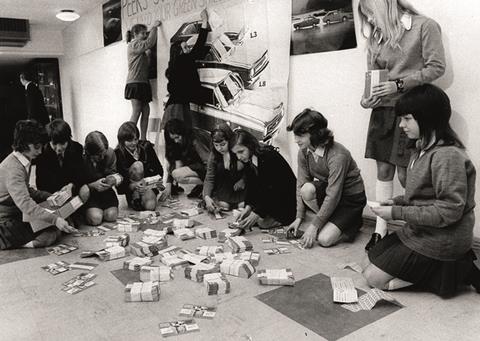
1963: Green Shield Stamps
Tesco’s adoption of Green Shield Stamps to pull in more customers was a prescient masterstroke. Sainsbury’s, which was the biggest supermarket in the UK at the time, hated the scheme and tried to get it banned. But Tesco believed it injected momentum into their business, inspired loyalty among their customers and gave them a chance to gain ground on Sainsbury’s. Ironically, the Green Shield operation evolved into Argos in 1973, and Sainsbury’s ended up buying it in 2016 for £1.4bn.
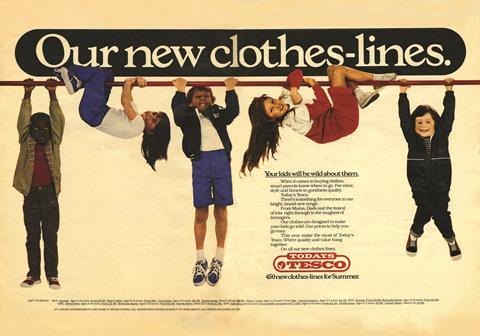
1960: Non-food and clothing
Cohen had always stuck to groceries, but at the turn of the swinging sixties he introduced clothing for men, women and children, and household goods and electronics like TVs, record players and radios. At the same time Cohen branched out into the north of England, buying 212 branches of Irwin stores.
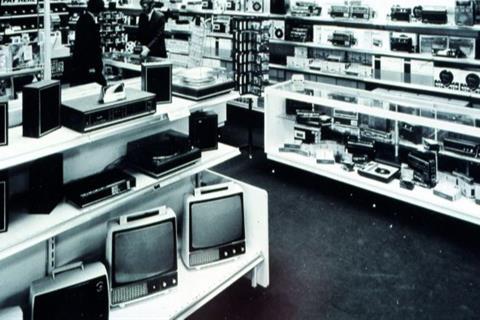
1964: Abolition of RPM
Resale Price Maintenance prevented large retailers from using their buying power to undercut the prices of smaller shops. Jack Cohen lobbied parliament to have RPM scrapped. In 1964, the Resale Prices Act was passed, abolishing RPM and arguably creating the supermarket culture that dominates UK retail today.
1968: First superstore and Victor Value
Tesco opened its first ‘superstore’ in Crawley, West Sussex, a 40,000 sq ft giant, offering the full range of food and non-food, and acquired the 217-strong Victor Value chain for £1.75m. Tesco kept some stores as Victor Value to offer a bargain-based arm to the operation.
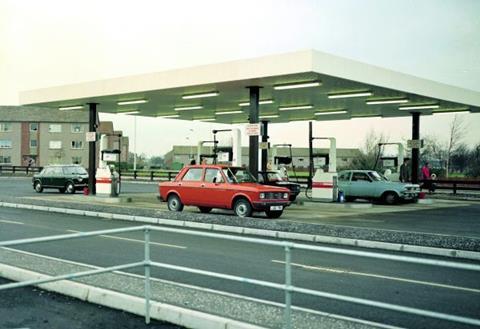
1973: Petrol
Tesco’s pioneering move into petrol in 1979 changed the way drivers filled up their cars. The plan was simple: introduce the same sharp prices on petrol as Tesco did with everything else. Less than 10 years later Tesco was selling £2bn worth of fuel every year and by the 1990s it had become the UK’s biggest fuel retailer. “We were thinking we’ve got to create reasons for customers to want to get in their cars and come to our edge-of-town, larger stores,” says UK CEO Jason Tarry. “And we saw the provision of fuel as a great opportunity to do that. We were really disruptive in the fuel market, opening new petrol stations and undercutting the local competition, and that meant a real reason for customers to come to our stores. And now, of course, we’re the biggest fuel retailer in the UK.”
1973: Cheshunt
Ideally situated just outside London and close to the M1 , A1 and soon after, the M25, Tesco’s functional new HQ, on a business park on Delamare Road, was a symbol of Tesco’s focus on shops and customers. Tesco left Cheshunt in 2015 for a new and much improved HQ in Welwyn Garden City.
1973: Lord Ian MacLaurin
Cohen was succeeded as chairman by son-in-law Hyman Kreitman in 1970, and another son-in-law, Sir Leslie Porter, succeeded him in 1973. But that same year saw another pivotal appointment, with Sir Ian MacLaurin, who joined as Tesco’s first trainee in 1956, and was personally mentored by Cohen, appointed MD.
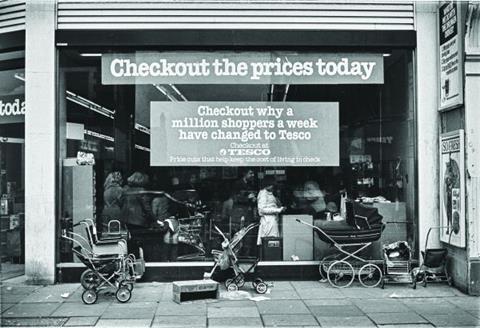
1977: Operation Checkout
One of MacLaurin’s first major moves was to scrap the successful Green Shield stamps scheme to introduce more focus on low pricing, after cheap rival Kwik Save started making inroads into its sales. It split the boardroom, but scrapping the stamps saved Tesco an estimated £20m.
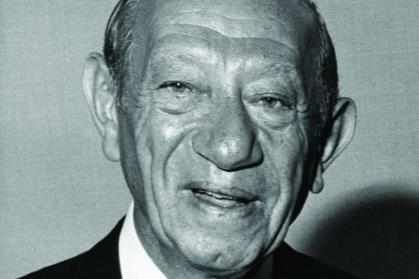
1979: Sir Jack Cohen dies
Cohen’s legacy will never be forgotten and his influence permeates through the operation today. Just before he died, aged 80, Cohen said: “The lessons I learned in the early days of my career still apply today, no matter how society has changed. In good times and bad, the company that works hard, that insists on offering value for money, and is not afraid to experiment and make changes will always prosper.” But his most famous quote – also the title of his autobiography – was “pile it high, sell it cheap”. Cohen was knighted in 1969 and retired from Tesco in 1970.
1982: MacLaurin slashes prices
Food sales had slumped across a country struggling with high unemployment. So MacLaurin launched Checkout ’82 in a blaze of marketing publicity. A revamp of the original Checkout campaign in 1977, prices on 1,500 key lines were cut between 3% and 26% and Tesco sales soared to £2bn.
1984: Tesco TV shop
Jane Snowball, 72, ordered a grocery shop from Tesco using a piece of tech called Teletext. In a forerunner of online shopping, she used her TV remote to choose from 1,000 products from the Ceefax-style display and her order was sent through her phone line to Tesco, who picked, packed and delivered it.
1985: Healthy Eating
By the mid-80s the UK was becoming increasingly conscious of health and fitness, and in response to consumer demand, Tesco introduced the UK’s first healthy eating range, dubbed ‘Healthy Eating’. The brand was later tweaked to ‘Healthy Living’ to expand the range into non-food like sports equipment.
1992: Tesco Metro
Tesco launched a two-year development programme that invested £1bn in 60 new stores, adding 2.3 billion sq ft of store space. But it also targeted smaller sites to drive growth and catch up with rivals, and Tesco opened its first Metro convenience store in Covent Garden, London. Five years later it had 40 Metro stores.

1993: Tesco Value
Kwik-Save was winning over shoppers with very cheap food in utilitarian packaging to clearly communicate the low price point. Tesco hit back by launching the Value range. Using basic red, white and blue packaging to hammer home the no-frills message, it had the desired effect and the range would become a billion-pound brand for Tesco.
In 1994, as sales soared, the battle between the two erupted into the ‘baked bean wars’, with Kwik-Save cutting the price of a tin of beans to as little as 7p, losing money on every sale as it tried to fight back. At one point Tesco was selling beans for 3p a tin. Tesco needed to take an aggressive stance and not just because of Kwik-Save: other discounters were moving in from Europe – like Aldi, Lidl and Netto.
1993: Every Little Helps
A contender for the best strapline in history, its longevity demonstrates its brilliance. Created by Lowe Howard-Spink, Every Little Helps was born out of Tesco customer research that suggested shoppers wanted a ‘better trip’ to the supermarket.
Early ads focused on in-store improvements, while the advertising campaign gained momentum in 1995 when Dotty, played by a fussy and demanding Prunella Scales, tried but failed to find anything to moan about at Tesco, eventually appearing in 25 funny ads that gave various different aspects of Tesco the chance to shine.
Tesco believes the campaign attracted 1.3 million new customers between 1993 and 1995. And while Tesco has gone through dozens of rebranding exercises the strapline endures both externally and internally.
1994: Scotland
Not for the first time, Tesco found itself up against Sainsbury’s in a battle to take over the 57-strong William Low supermarket chain in Scotland and the north of England, but winning out was important strategically and symbolically and today Tesco has 29% share in Scotland, while Sainsbury’s has just 9%.
1994: One in front
This was among the most simple but also the most effective of Tesco’s innovations, as it became the first UK retailer to offer customers a service commitment at the checkouts. It was a living embodiment of Tesco’s Every Little Helps strapline and was further enhanced in 2006 through the use of thermal imaging cameras.

1995: Tesco Clubcard
It’s impossible to identify the best move Tesco made to get to where it is today, but the introduction of Clubcard is a contender. The execution was simple, one Clubcard point for every £1 spent, which resonated with customers, and five million customers jumped at the chance to get a Clubcard inside 12 months.
Tesco later introduced double points, and most recently ‘Clubcard Prices’, where Clubcard carriers can pay up to 50% less on items as part of Tesco’s centenary celebrations. “Every time we communicate about Clubcard we have a spike in numbers,” says Alessandra Bellini, Tesco’s chief customer officer. “It just reminds people of the proposition.
And the current proposition is incredibly competitive, still the most generous scheme in the country.” Today, over 19 million customers carry a Clubcard, some 60% of UK households.
1995: Expansion into Europe
Tesco’s push into Europe started with Hungary, where it paid £15m for a 51% stake in supermarket chain Global, which owned 43 stores in the country. Tesco went on to spend £8m on the 31-store Savia chain in Poland, and paid £79 million for 13 Kmart stores in the Czech Republic and Slovakia.
1995: Tesco overtakes Sainsbury’s
There was no specific initiative that resulted in Tesco overtaking Sainsbury’s as the UK’s largest supermarket, but it was hugely symbolic. Sainsbury’s had been the dominant force for years, but once out in front, there was no holding Tesco back as the gap over its closest rival continued to widen for years.
1996: Tesco Direct
Tesco was the first retailer to sell groceries online. Initially dubbed Tesco Direct, an early trial used CD-Roms, phone and fax, as well as the internet. From those early learnings, it now has 20 million customers visiting tesco.com every month, and is the clear leader in terms of online grocery share.
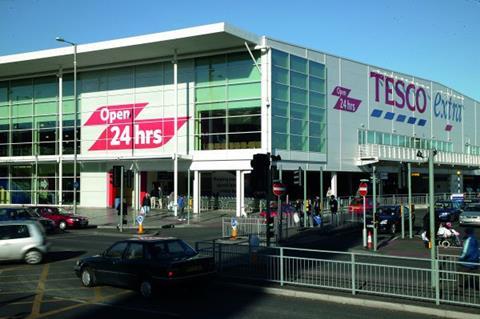
1997: First Tesco Extra
The first Extra store was in Pitsea, Essex. At 103,000 sq ft, compared to Tesco’s previous largest stores (around 80,000 sq ft), the huge store sold a vast range of food and non-food. Tesco would open two more in quick succession as it tried to curb Asda’s progress, which was finding success with similar sized stores.
1997: Sir Terry Leahy
Leahy joined as a marketing exec in 1979. He is synonymous with the launch of Clubcard and was also instrumental in its move into online grocery before taking over as CEO in 1997, and subsequently accelerated Tesco’s growth, driving share from 20% to over 30%, and pushing it into many overseas territories.
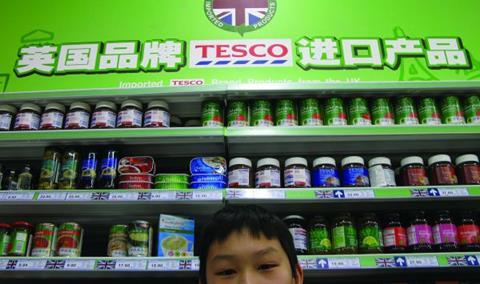
1998: Asia
Tesco headed east, entering Thailand in 1998 as Tesco Lotus, South Korea in 1999, Taiwan in 2000, Malaysia in 2002, Japan in 2003 and China in 2004, by which time Tesco had as much floorspace outside the UK as it did within it – though the UK still delivered more than 75% of group sales.
1998: Tesco Finest
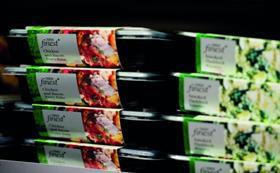
Tesco started life with an own-label product, evolved it with the likes of canned range Golden Ring, bolstered the range with Value in 1993, and topped off the tiering with Tesco Finest in 1998. The sleek, dark packaging was the perfect foil for the Value range and it was another smash, guided by then marketing director Tim Mason. Launching with 130 products in 200 stores, Tesco described it at the time as “the best ready-prepared food to ever have reached the supermarket shelf” and shoppers agreed as it rolled out nationally, and gradually extended into multiple categories, from wines to cheeses to coffee – even non food. After a revamp in 2006 sales leapt 37% in a single year and it was worth £1.2bn by 2008. Today there are now over 1,400 Finest products.
2001: Florence & Fred
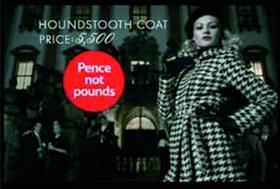
Tesco launched Florence & Fred the same year Asda launched George and both quickly grew to take a share of the clothing market. By 2003, Leahy said sales of Tesco’s three clothing lines – Cherokee, Florence & Fred, and Tesco – had given it a clothing market share of 4.4% and in 2017 Kantar estimated that £1 in every £10 spent on clothing was spent at a supermarket. “Tesco Extra was inspired by the hypermarkets that we saw as being a destination for one stop shopping, and as part of that one stop shop, clothing was and is high on the list of general items that customers want,” says Tarry.
2002: T&S
One of the crucial moves Tesco made to get bigger was to focus on smaller stores, and it accelerated into the c-store space by snapping up T&S Stores, which included the One-Stop chain, for a reported £377.3m. The T&S deal added 862 c-stores, making Tesco the third biggest player in convenience.
2003: First Free From range
Tesco was the first UK retailer to launch a Free From brand, offering 40 own-label products alongside 120 Free From branded items, stealing 40% of the market for consumers with food allergies and intolerances to gluten, wheat and nuts. In 2012 it extended the range to include a variety of dairy products.
2006: Dark stores
Fully stocked supermarkets staffed by ‘pickers’ but devoid of customers, dark stores were introduced by Tesco to meet growing demand for online shopping and increase efficiency. Later incarnations of the first dark store dramatically increased automation, though there are also plans to utilise store space better.
2007: Fresh & Easy
Tesco’s ill-fated journey to the US is notable mostly for the fact that, until then, Tesco had so rarely failed. The reasons have been endlessly dissected, from the ranging, to the self-service checkouts, to the name itself, but the timing was also unfortunate as the sub-prime mortgage crash of 2008 quickly spiralled.
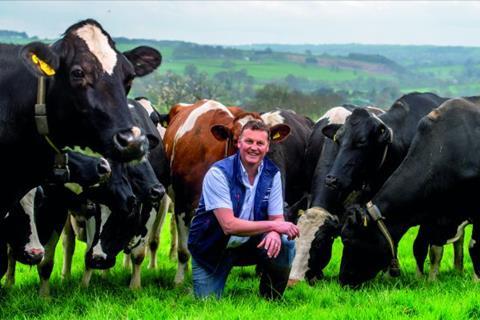
2007: Tesco Sustainable Dairy Group
In response to the price pressure dairy farmers were under, Tesco launched the Sustainable Dairy Group, working directly with 600 dairy farmers large and small, a number that later rose to 800. Tesco offered them guaranteed prices and long-term contracts, later extending the concept to nine other farming areas.
2012: Everyday Value rebrand
It was value, rather than cheap prices, that won customers in the post-credit crunch retail space. So Tesco revamped its Value range – which was generating £1 billion in sales at the time – and introduced the “brightly packaged and brilliantly priced” new range, which also introduced the concept of ‘Everyday’.
2013: Food waste
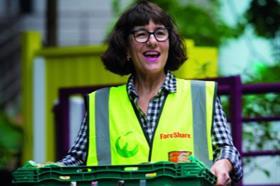
Tesco made a groundbreaking step in the battle against food waste when, in 2013, it published its food waste figures for the first time. The year before, it had strengthened its relationship with Fareshare, after initially working with the charity to redistribute surplus from its online operations. The trial was then extended to its distribution centres, while Community Food Connection was rolled out in 2016 to become the biggest supermarket food redistribution scheme in the UK, providing over 75 million meals to more than 7,000 groups to date. That same year, Tesco committed that no food safe for human consumption would go to waste. And in 2017, 27 of Tesco’s largest suppliers published their data and Tesco, along with 10 of the world’s largest food brands, committed to halving their food waste by 2030. This year, Dave Lewis called on the rest of the supermarkets to follow Tesco in publishing their food waste data, and confirmed it is now 81% of the way towards its target.
2013: Sales peak
Tesco’s sales peaked at £70.9bn in 2013. A year earlier, it had posted record profits of £3.8bn too. But CEO Philip Clarke, who had replaced Leahy in 2011, was struggling to contain the rampant discounters Aldi and Lidl in the UK, and was forced to close the US Fresh & Easy operation to stem losses there.
2014: Dave Lewis arrives
With Tesco struggling, Dave Lewis was brought in to replace Clarke. The Unilever exec, who cut his holiday short as trading deteriorated, was in for a nasty surprise as, within three weeks of his arrival, he had uncovered a £325m profits overstatement in the previous financial year’s accounts.
2015: Profits plunge
Facing into the accounting scandal, Lewis announced a staggering £6.4bn loss, one of the biggest in corporate history. But already Lewis was hard at work on a turnaround plan, boosting availability, reviewing its ranging and pricing, and working to address its battered supplier relations and brand reputation.
2015: Project Reset
The aim of Project Reset was to slash Tesco’s range, which had bloated to 90,000 skus, and deliver a volume-led recovery through lower and simpler pricing, more focus on own-label, combined with longer-term supplier relations. Such has been the success of Project Reset, it’s now on its fourth iteration.
2016: Farm Brands
The launch of Farm Brands, positioned as providing great quality and value for customers, was not without controversy, but by June, Dave Lewis was crediting Tesco’s sales increase to the new brands, and has been the catalyst for the launch of a broader Exclusively at Tesco range. Latest figures show sales up 11%.
2017: Booker
The market was stunned by Tesco’s merger with Booker, the biggest wholesaler in the UK. The enormous £3.9bn deal was quickly approved by investors from both businesses who recognised cost-saving synergies and increased buying power and opportunities for trade for both businesses.
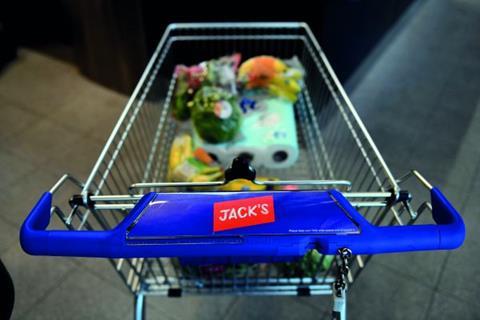
2018: Jack’s
Was it a long overdue, head-on assault on the discounters, or a celebratory format, named after Tesco’s founder to celebrate 100 years in business? The truth is somewhere in between. Certainly Jack’s looks like a discounter, packed with a tight range of own-label ‘Jack’s’ products, cheap prices, small stores and only a sprinkling of brands – plus former Aldi exec Lawrence Harvey runs the show. Yet Dave Lewis insists the launch is a “celebration of the centenary of Tesco” and an opportunity to test new innovations as it continues to experiment with formats and prices. Either way, it has attracted a lot of publicity, now has nine stores, and Jack’s products are also being listed in some Tesco stores.
2019: Tesco celebrates 100
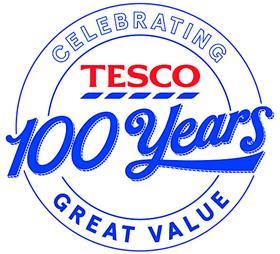
Tesco has enjoyed a century of evolution from market stall to the 10th biggest retailer in the world. Jack Cohen started it and grew it, MacLaurin pushed it forward, Malpas kept it growing and Leahy sped it up. Now Lewis is in charge, but all of them would insist that however brilliant their leadership was, and however talented the executive teams they assembled around them were, there have been millions of Tesco employees over the last 100 years on the shop floor that have made Tesco what it is today. MacLaurin recalled Cohen taking him aside on his first day to impart some wisdom. “Remember one thing,” said Cohen. “The most humble person in the organisation is the most important.” And as it celebrates 100 years of retailing, Tesco will take that sentiment forward.
Celebrating 100 years of Tesco
- 1
- 2
- 3
![1919 CMYK_CROYDON_MARKET[2]](https://dmrqkbkq8el9i.cloudfront.net/Pictures/100x67/5/3/1/167531_1919cmyk_croydon_market2_341116_crop.jpg) Currently reading
Currently readingTesco’s defining moments
- 4
- 5
- 6
- 7

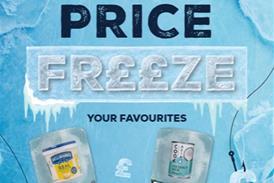

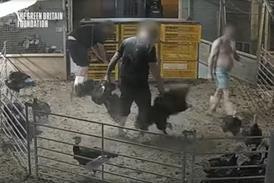
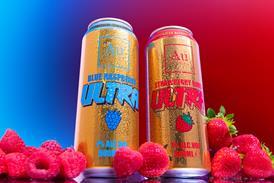


![1919 CMYK_CROYDON_MARKET[2]](https://dmrqkbkq8el9i.cloudfront.net/Pictures/480x270/5/3/3/167533_1919cmyk_croydon_market2_341116_crop.jpg)







